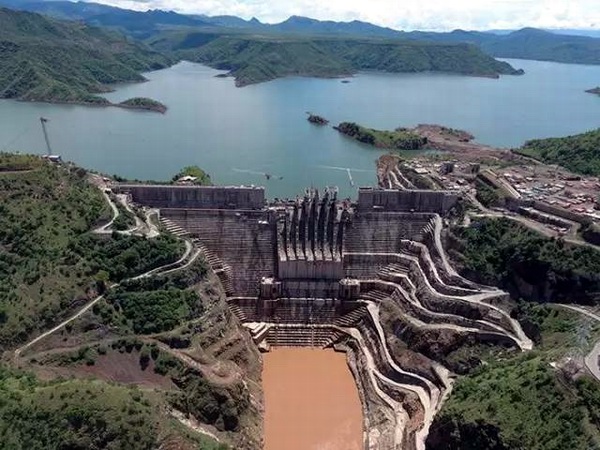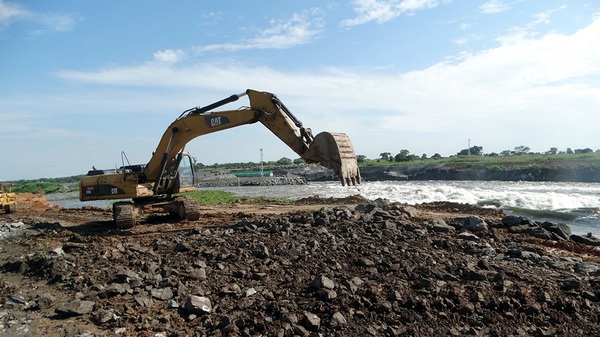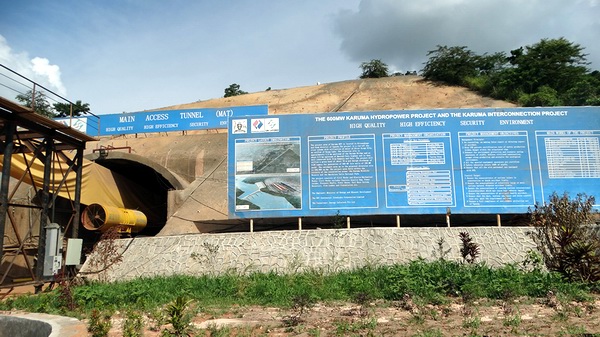At present, about 630 million people in the African continent have no reliable electricity supply, less than 15% of the population with access of electricity, and most of the rural population mainly rely on firewood, charcoal or crop waste as cooking and other living energy. According to the report released by the International Energy Agency in 2016, the average rate of electrification in the African continent is 45%, with urban electrification rates much higher than rural areas, with an average of 71% in urban areas and 28% in rural areas. Africa's electricity coverage is low in the world level. In the context of the global response to climate change and efforts to develop the economy, African countries have a huge potential for clean and renewable energy.
Africa is very rich in water resources. The International Energy Agency believes that hydroelectric power is the most important component of electricity systems in many African countries and is the most widely used renewable energy resource (excluding biomass). The International Energy Agency's assessment of the potential for hydropower in Africa is 283 GW, with an average annual generating capacity of 1,200 TWh, which accounts for 8% of the world's exploitable hydropower resource, but the overall water use efficiency of the continent is still Low, the current actual development rate is only 9%, and most of them are concentrated in Central Africa and eastern Africa, especially concentrated in Cameroon, Congo (Brazzaville), Congo (Kinshasa), Ethiopia and other countries. Some countries in Africa have also developed large-scale hydropower resources, such as Angola, Madagascar, Mozambique and South Africa, in southern Africa, Guinea, Nigeria and Senegal in western Africa.
Hydropower development in major African rivers (Zambezi River, Congo River, Nile River, Niger River, etc.) can meet the growing demand for electricity. The Congo River, located in the Democratic Republic of the Congo, has more than 100,000 MW of hydroelectric potential sufficient to meet the electricity needs of the entire southern African continent. The Zambezi River also has as much as 100,000 MW of water potential, while Ethiopia and Nigeria have 30,000 MW and 20,000 MW of hydropower potential respectively.
At present, about 82% of the hydropower stations are located in a few relatively peaceful countries of northern and southern parts of Africa. The development of hydropower resources has always been the most important issue of the Congo (DRC) government. The installed capacity of the Inga III project is 1.8 GW, and when it is fully completed, the total installed capacity of the hydropower project will reach 44 GW. There are other hydropower projects that are also being implemented in an orderly manner, such as the Mphanda Nkuwa dam under construction in Mozambique. At the same time, small hydropower projects are being developed steadily in sub-Saharan Africa.
Mozambique, Congo (DRC), Uganda and Kenya, these countries rely mainly on hydropower, and only 10% of the technically exploitable potential is now developed.
Although Africa's natural resources and development conditions are blessed, the level of development of the energy industry, especially the power industry, is still very low due to the relatively backwardness of ideas and technologies, especially lacking in funds. At present, in Africa for the economically exploitable hydropower resources, there are still many obstacles. Including the huge amount of funds in the early stage, the lack of communication between countries, the absence of electricity export opportunities; seasonal climate issues; environmental and social problems, the impact of hydropower stations on water resources and water environment; some countries lack the necessary development technology and so on.
Some of the African countries along the Belt and Road are rich in water resources, small hydropower theoretical reserves huge, but the development rate very low, the general coverage rate not high, the development prospect bright. Such as: the theoretical reserves of small hydropower resources in Ethiopia and Kenya were 1500 MW and 3300 MW, the installed capacity was only 6.16 MW and 33 MW respectively, the power coverage rate was less than 30%. In Sudan, the power coverage rate is only 5%, Uganda only 10%.
1. Southern Africa
At present, the southern African countries has a total installed capacity of 58 GW, hydropower now accounts for 22% of the region's total electricity generation. South Africa's total installed capacity is 46 GW, of which the installed capacity of hydro power installed capacity of South Africa is 5% of the total. Excluding South Africa, the remaining 2/3 population in southern Africa has only 12 GW of installed capacity, of which hydropower installed capacity accounted for half. At present, some countries in southern Africa, hydropower resources development is still very little, but it has great development potential, especially in the Zambian River Basin like Mozambique, Angola, Zambia and Zimbabwe and other countries.
It is expected that by 2040, the installed capacity of hydropower in southern Africa will reach 29 GW.
2. West Africa
In 2012, hydropower installed capacity in western Africa reached 20 GW, accounting for 20% of the total installed capacity of the region. Previously, hydropower has been the main source of electricity in the region, but since the 20th century, with the development of installed capacity in fossil energy by leaps and bounds, the increase of hydropower installed capacity significantly decreased.
It is estimated that by 2040, the installed capacity of hydropower in western Africa will reach 24.4 GW, of which Nigeria's installed capacity will reach 15 GW.
3. Central Africa
Central Africa is the most abundant region of water resources in Africa and is the region with the highest hydropower development potential in sub-Saharan Africa. At present, hydropower installed capacity accounted for 65% of the total installed capacity of Central Africa. Countries such as Congo (DRC), Cameroon and the Congo (Brazzaville), whose electricity sources rely mainly on hydroelectric power generation.
It is expected that by 2040, the installed capacity of hydropower in Central Africa will increase from the current 2.6 GW to 20 GW.
4. Eastern Africa
In eastern Africa, the total installed capacity is 8.1 GW, of which hydropower installed capacity exceeds half. Ethiopia occupies a leading position, known as the " Water Tower in East African ", with abundant water resources, and almost all of Ethiopia's electricity comes from hydroelectric power due to the lack of fossil fuels.
At present, there are many hydropower projects under construction in eastern Africa. The Merowe dam of Sudan, built in 2009, has an installed capacity of 1250 MW and accounts for 15% of the total electricity generation in Eastern Africa. Ethiopia's hydropower project, Beles II (installed capacity of 460 MW) and Gilgel Gibe Phase II (installed capacity of 420 MW), were completed and put into operation in 2010. Kyrgyz Gibo III (installed capacity of 1870 MW) was also completed in 2016, all units put into operation. The Grand Renaissance Dam is under construction and has a capacity of 6,000 MW after completion, making it the largest hydroelectric power station in Africa.

The Merowe hydropower dam of Sudan

Ethiopia's Gilgel Gibe hydropower project (1870MW)
Uganda's hydropower installed capacity is also increasing. At present, Uganda's energy is dominated by bio fuels, consuming 93% of total energy, a serious shortage of electricity, representing only 1% of total energy. The nation's electricity supply capacity is only 350 MW, one of the lowest per capita electricity consumption in Africa. Uganda is full of rain and abundant in water resources with an average annual rainfall of 1174mm. It has the world's second largest freshwater lake - Victoria Lake, and the Nile River and other rivers and lakes, more rapids and waterfalls, suitable for hydropower development and construction. The national hydropower reserves are about 2300 MW. Hydropower has been the main source of power supply, the installed capacity of hydropower installation from Nile River in Uganda is 380 MW, but the actual power capacity for generation around 200 MW. The built hydropower stations consist of 200 MW Chieira hydropower station and 180 MW Naruoba hydropower station. In recent years, the Ugandan government has been focused on the development of large, medium and small hydropower stations to ease the serious shortage of electricity. Those under construction or in planning include 7 big projects:
(1) Bujacari hydropower station (installed capacity of 250 MW);
(2) Karumah Hydropower Station (installed capacity of 600 MW);
(3) Calgara hydropower station (installed capacity of 450 MW);
(4) AyiakkoBei Hydropower Station (installed capacity of 300 MW);
(5) Aya Gannan Hydropower Station (installed capacity of 250 MW);
(6) Mukesen Falls Hydropower Station (installed capacity of 600 MW);
(7) Isinba Hydropower Station (installed capacity of 183MW). The Ugandan Ministry of Energy after investigation and research also plans to develop more than 50 small hydropower stations with a total installed capacity of 210 MW.

The largest hydropower station in East Africa, Kalumah Hydropower Station of Uganda had the river closure on June 11, 2015

Underground engineering represents the majority of the works for Karumu project (Uganda Karumu Hydropower Station)
It is expected that by 2040, the installed capacity of hydropower in the region will reach 20GW.
|